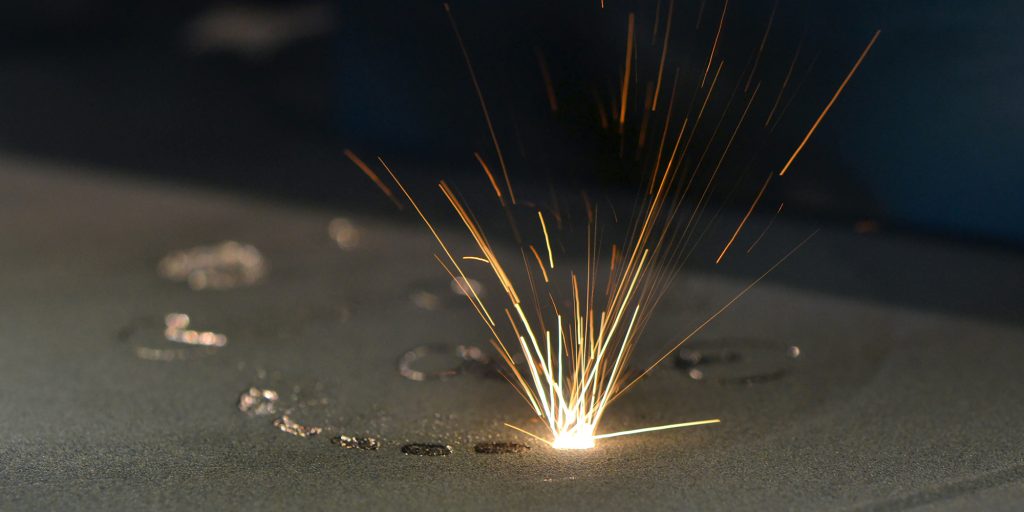
Welcome to PivotAM Auctions
Dedicated to Industrial & Professional 3D Printing/Additive Manufacturing/Rapid Prototyping Equipment
Used Industrial 3D Printers
When you are searching for a used 3D printer, you will notice a number of types of technologies with different names. To help you compare similar types of printers, below are the most common technologies with their synonyms and similar technologies.
“3D printing” covers a wide range of technologies, each of which has different strengths. Some technologies are better suited for industrial applications like production, functional testing and tooling, while others are better for consumer goods or design applications.
Similar Technologies/Names: Fused Deposition Modeling (FDM), Fused Filament Fabrication (FFF), filament extrusion, fused filament deposition, and material deposition.
Fused Deposition Modeling (FDM) is the most widely used form of 3D printing because of ease of use and because the finished model is in production plastic. This technology builds parts layer-by-layer from the bottom up by heating and extruding a thermoplastic filament.
Thermoplastics are available with special properties like toughness, translucence, biocompatibility, electrostatic dissipation, UV resistance, high-heat deflection, and flame retardance. The relative weakness of this technology is that you may have visible layer lines and the parts are weaker along the layer lines.
Similar Technologies/Names: PolyJet Printing (PJP), Multi-Jet Printing (MJP), photopolymer jetting.
PolyJet 3D printers work similarly to a traditional inkjet printer, but instead of jetting ink onto paper, the print head jets liquid photopolymers onto a build tray. Each droplet is cured in a flash of UV light. This type of 3D printer can provide sharp precision, smooth surfaces, and very fine details. It can mix photopolymers in specific concentrations to many materials, even rubber, and human tissue. 3D printers with photopolymer jetting make amazing realism with a full gamut of colors.
The wide range of advanced plastic, elastomeric, composite and wax materials for MJP printers produces high-performance parts for concept models, functional prototypes, casting patterns, rapid tooling, jigs and fixtures, and medical applications.
Similar Technologies/Names: Stereolithography (SLA), continuous SLA (cSLA), vat photopolymerization. A 3D printer with stereolithography (SL) technology is an excellent option for very tight tolerances and smooth surfaces. A UV laser cures and solidifies very fine layers of photopolymer in an open vat with this technology. Designers like this technology for quick build times for strong parts made of transparent, heat-resistant, moisture-resistant materials. SLA systems have the largest build envelopes in this space. cSLA builds continuously and has shorter build times but also a smaller build envelope.
Similar Technologies/Names: laser sintering (LS), selective laser sintering (SLS), power bed fusion (PBF) SLS/PBF systems fused powder plastic together by use of a laser or infrared heat. These systems produce production parts in higher volumes and speed. Common plastics are nylon, glass-filled nylon, or casting plastic for sacrificial models.
Similar Technologies/Names: Direct Metal Printing (DMP), Direct Metal Laser Sintering (DMLS),
DMP/DMLS systems fused powder metal together by use of a laser. These systems produce production parts in a variety of metals. They are higher-priced, more complex systems used in production applications. Common metals are aluminum, stainless steel, tool steel, titanium, super alloys, and copper.
Similar Technologies/Names: Digital Light Processing (DLP), digital light synthesis (DLS), Continuous Liquid Interface Production (CLiP).
These systems use a digital light projector as a light source and can build each layer under continuous movement. These systems have the shortest build times and can build production plastic parts with the aid of post-processing. Build envelopes are smaller than SLA but higher throughput offsets the smaller size.
Similar Technologies/Names: Color Jet Printing CJP, binder jet printing.
These systems fuse gypsum together with a cyanoacrylate binder and full-color print heads. The result is a very realistic concept model in full color. Parts are not for production or functional testing but are great marketing aids or educational models. These systems have high print speeds and low operational costs.
How to Bid on an Auction
Once you create an account on PivotAM Auctions (it’s free and takes seconds to complete),
bidding on an auction is easy. Here’s how it works:

1
Find the Perfect Item
Enjoy virtual window shopping by browsing auctions and category pages or search for something specific.

2
Register
See something that catches your eye? Click “My Account” in the menu, which allows you to register for the website for free.

3
Check Your Email
Once you fill out the registration, you’ll receive an email notifying you of your password (which can be changed). Log in to the site to be able to bid.

4
Place Your Bid
Place an bid or purchase the item before the sale. Being able to buy the item outright ends once the auction starts and a bid is placed.
New to Pivot Auctions? Learn how it works!
Registration
Registering to bid on pivotamauctions.com is free and allows the bidder to actively bid on any piece listed on the website.
To register to bid, simply click on the My Account in the menu, and go through the registration process. Any information submitted through the registration process is 100% confidential.
Once you have submitted your registration, you will receive an email from an Pivot AM Auctions rep to finalize your registration and answer any questions you might have about the bidding process.
Live Bidding
Live bidding is the period of time when bidders can monitor the auctions and place live bids on pieces scheduled to end at the designated time. We encourage bidders on the site to contact Pivot AM Auctions of the piece they are bidding on before they place a bid and gather all unknown information before bidding. Once live bidding opens, all bids are final and cannot be removed.
Max Bid—Bidders have the opportunity to place their max bid—the highest amount you are willing to bid on that piece. The seller and other bidders will never know the amount of this bid. Pivot AM Auctions will place bids, on your behalf, using the smallest bidding increment necessary to ensure that you remain the high bidder until your max bid is met. If another bidder has placed the same bid before you, or a higher max bid, we’ll let you know that you’ve been outbid and you will have the opportunity to place another bid.
Buy It Now—Bidders have the option of buying an auction item instead of bidding on it. The option to buy the item stays available until the auction reaches the price set as the “Buy It Now” price.
Time Extension—When the piece has only one hour left, it will display that any bid that is placed in the last minute of the auction will extend the auction by up to 120 seconds. For example, if a bid is placed at 10:59 a.m. and the auction is scheduled to end at 11 a.m., the auction could be extended up until 11:02 a.m. This will continue to extend the end time as long as bids are being placed on that piece.
Winning the Auction— After the auction has concluded, an email notification will be sent out to the winning bidder notifying them of next steps. Pivot AM Auctions will notify buyer and seller and provide each other’s information after the transaction is complete. It will be up to these two parties to contact each other to decide on the details of the transportation of the piece.
Navigate The Site
Details Page—Each individual piece has its own details page. This page includes the auction information on the piece (lot number, opening bid, auction end date/time), specifications of the piece, inspection information on the piece and any available pictures of the piece.
Sorting—You are able to sort the items on the site by printer type on the right hand side of the page.
Watch List—When logged in as a registered bidder, you can indicate a listing as an item to add to your watch list. By clicking on the “Add to Watch List” link under the bidding area, it will be kept in your My Account area to be viewed at any time. You will have the option of adding notifications to these pieces and to receive emails [and texts] at different points throughout the auction process.
My Account—This link, located in the menu, allows you to update your registration information, view any bids you’ve placed, and keep track of any items you’ve marked as pieces of interest. If you have added a Printer or Ancillary Equipment to your list, you can keep track of these items in this area. You will have the option of getting email [and text] notifications as these pieces go through the auction process.
Email [and Text] Messages—You have the option of setting up email [and text] notifications when you add different pieces on the site to your Watch List. You have the option to receive different notifications throughout the auction process on the pieces you have selected.
Buyer Expectation
Bidding—Prior to bidding, the buyer has access to contact Pivot AM Auctions at sold@pivotamauctions.com with any questions they have about the machine, shipping, sales tax, and payment details to avoid any issues once the auction has ended. Once live bidding opens, all bids are final and cannot be removed.
Winning Bidder—The winning bidder is expected to be prepared immediately following the sale to set up payment and a time to pick up the item.
Seller Expectation
Selling through Pivot AM Auctions—The seller is expected to represent the machine to the full extent of their knowledge. The seller is not allowed to bid on their own equipment. If a seller bids on their own piece of equipment, the bid will be removed immediately. Bidding on your own equipment or failing to accurately represent your machine could result in a revocation of your right to sell equipment on pivotamauctions.com.
Pivot AM Auctions makes no representations, guarantees or warranties regarding the machine or the buyer or seller and encourages users to conduct any investigation deemed necessary. Furthermore, Pivot AM Auctions is merely a venue that brings buyers and sellers together and is not in any way a brokerage or represents the buyer or seller.
What makes Pivot AM Auctions different?
We grew up with this industry and know each technology and where it performs best. We know many of the OEMs and can aid in a smooth transition from one owner to the other through proper communication, logistics, de-install, and re-install. We properly list each machine with accurate data that pertains to its application.
How does bidding work?
Bidding works like similar auction sites in which you place a bid and hit submit. If you are outbid, you will be notified. If you select “Buy It Now,” the auction site will contact you to guide you through the final transaction.
I won an auction…now what?
Winners of an auction will be contacted by the auction site to complete the transaction and connect you with the seller.